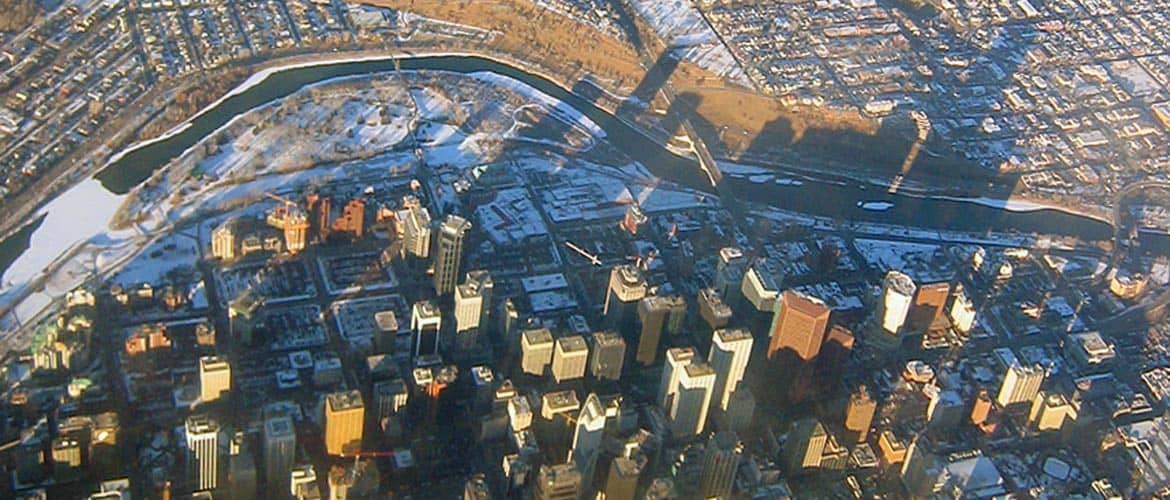
JASA has been involved with numerous projects requiring surveying and monitoring of adjacent structures and shoring walls throughout the various construction stages. Calgary’s downtown construction projects are often within close proximity to adjacent structures and are comprised of deeper foundations. As such, the necessity for condition surveys and monitoring is necessary.
A pre-construction condition survey provides independent photographic and documentary evidence of site specific adjacent structures and features prior to commencement of construction. All prominent defects in the form of cracks, spalling concrete, settlement, movement, or other structural or cosmetic defects will be recorded with digital photographs and compiled into a comprehensible report.
The purpose of a pre-construction condition survey is to provide a snap-shot in time record of the condition of adjacent structures prior to construction activities. While it is not expected that construction will cause damage to neighboring structures, a survey is undertaken as a precautionary measure and will assist building owners, contractors and developers in the event of a claim for damage.
Videographic evidence, although available, is not widely used due to a lack of ability to focus on specific areas. Video footage is typically utilized only to give wide angle generalized views of large areas but cannot document with the same detail as high resolution digital photographic evidence.
Once a pre-construction condition survey has been completed, monitoring of any relevant existing cracks observed in adjacent foundations can be conducted utilizing one of two methods. Placement of a monitoring paste to track movement at pre-existing cracks can aid in the determination of subsequent movement, or installation of standard Tell Tale Crack Gauges spanning pre-existing cracks can facilitate a quantitative measurement on two axes (horizontal and vertical) where any subsequent movement occurs.
In conjunction with a photographic survey, a pointwise survey can also be conducted of the adjacent roadways, sidewalks, curbs and other fixed features deemed relevant to the proposed construction at the site to establish their pre-construction location and elevation for future comparison.
The vertical and horizontal datum is recorded, with a photograph taken of the pointwise feature surveyed. The collected data is then presented in a drawing referencing the general locations recorded with a thumbnail photo of each point taken.
If required, a subsequent survey and comparison to the initial survey can be conducted. Baseline data is retained on file for all future comparisons.
Reflective targets and/or foundation pins can be installed on adjacent structures to monitor movement/rotation on a frequency selected. A report is provided following each monitoring event conducted detailing the findings. Typically, one of two methods are utilized in monitoring adjacent structure movement.
Adhesive reflective targets can be affixed on adjacent structure foundations. The targets are set on two of the building faces to facilitate checking for any horizontal movement/rotation of the structure. A baseline survey is conducted to record the initial location and orientation of all the targets prior to construction commencing. The reflective targets are then monitored and the information provided in spreadsheet format comparing the initial, the current, and any previous data recorded.
The monitoring of adhesive reflective targets attached to a building wall often does not achieve the desired repeatable accuracies required. The standard deviation of measurements utilizing a conventional total station is an accumulation of the precision of angular measurements and the distance. In addition to an instrument’s limitations, weather conditions, operator errors, reflective targets vs. reading to a glass prism, and angular observation will lower the accuracy.
The settlement of a building (vertical movement) is an indication of building movement. The most accurate readings can be determined by conventional leveling techniques via a digital level with bar code rod and/or spirit level. To precisely monitor the adjacent buildings for vertical movement, permanent pins are set in the building foundations or other fixed features and are monitored for variation from the baseline data. All elevations are tied to an Alberta Survey Control Marker and off site control points with a digital level on each monitoring event.
Once construction commences, reflective targets are supplied to the onsite contractor to be affixed to the face of shoring piles. During construction, monitoring of movement of the targets can be completed, and a report provided following each monitoring event.
A control network is set for the initial and subsequent monitoring/observations, and the vertical and horizontal position of each target is recorded. The reflective targets are then monitored and the information provided in spreadsheet format comparing the initial, the current, and any previous data recorded.
Slope Inclinometers can be installed within select shoring piles to facilitate monitoring of shoring movement during construction phases. A Digitilt Inclinometer Probe is utilized to record on multiple axes through a below-grade casing.
Casing is installed within opened pile holes as the piling contractor is placing concrete. The shoring designer typically selects the most appropriate pile locations.
Once installation of the inclinometers is complete, baseline readings are completed. The baseline readings are typically the average of three readings, on three different days, as per the manufacturer’s installation protocols.
Subsequent monitoring is conducted and the information provided in a reporting format conducive to the owner and/or design team for review and assessment.
A post-construction condition survey can be conducted upon completion of the foundation construction activities on site. The survey would be conducted to compare the current conditions of the adjacent structures to the previously documented areas noted within the pre-construction survey. This survey, in combination with the pre-construction condition survey, is considered to be a complete documentation compendium of the conditions of the adjacent structures observed during the course of construction.